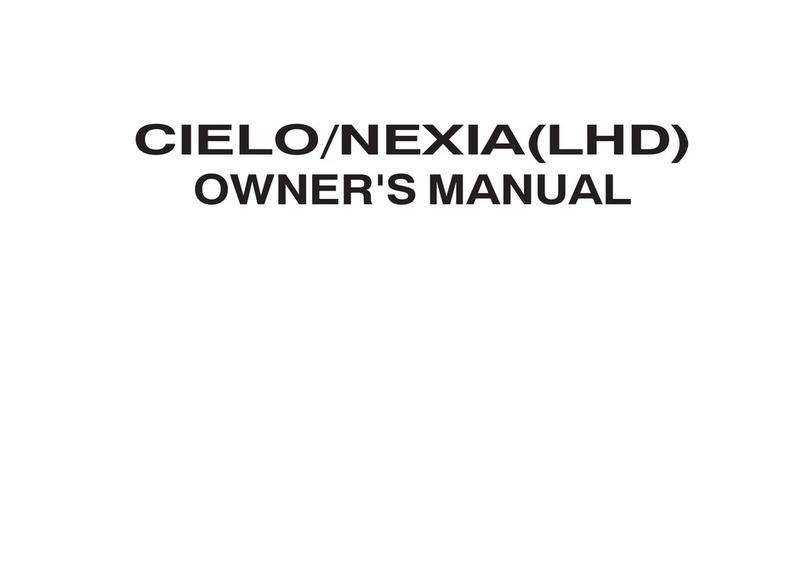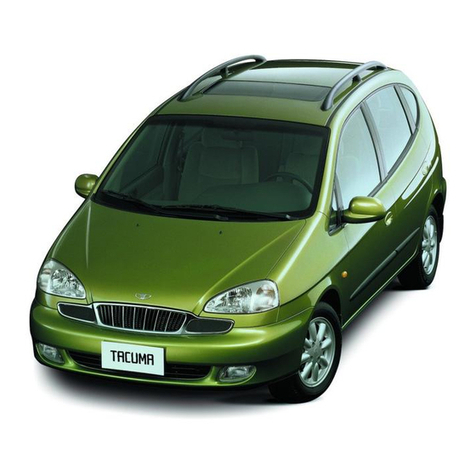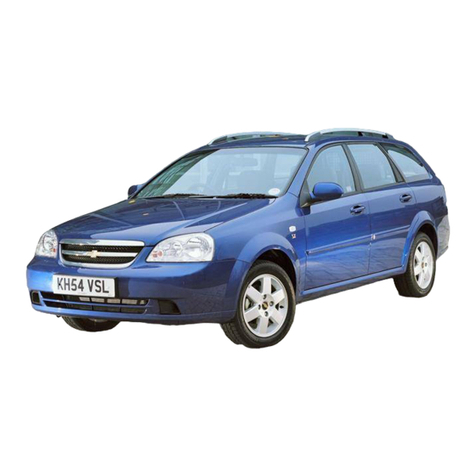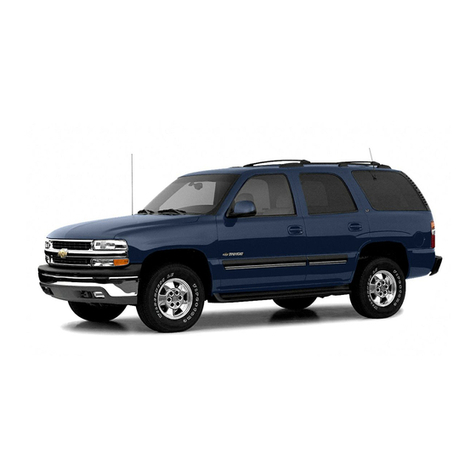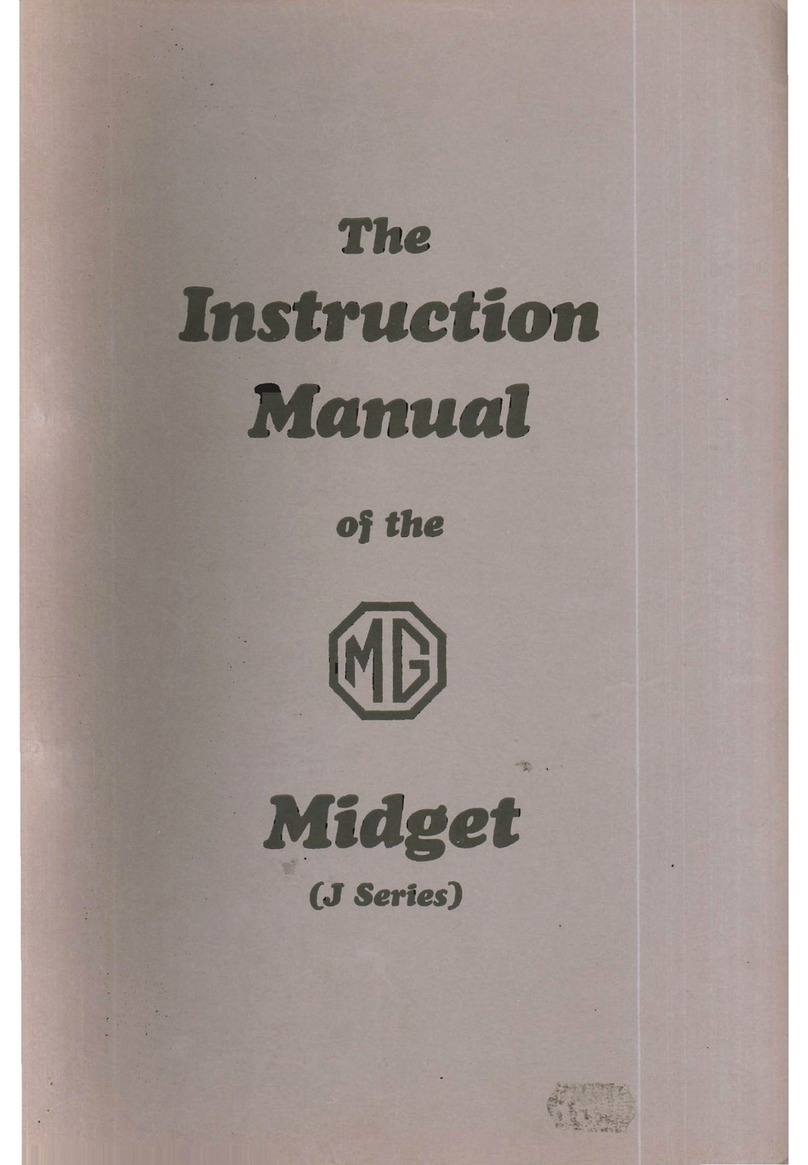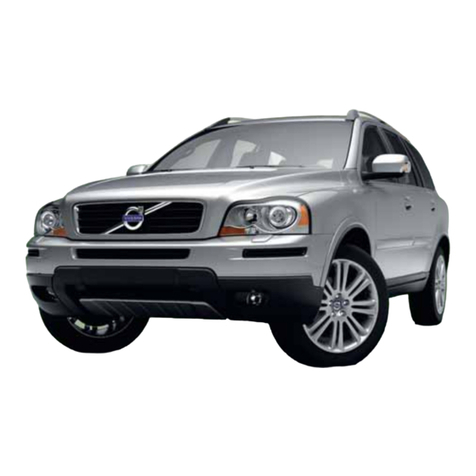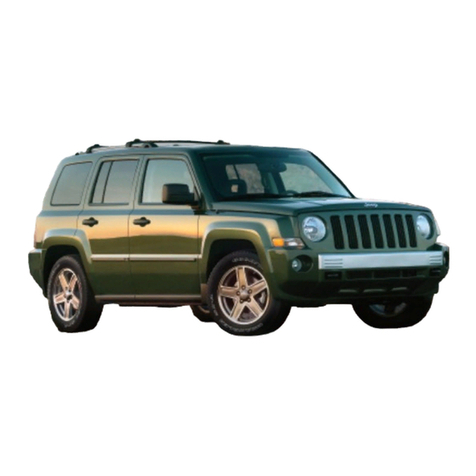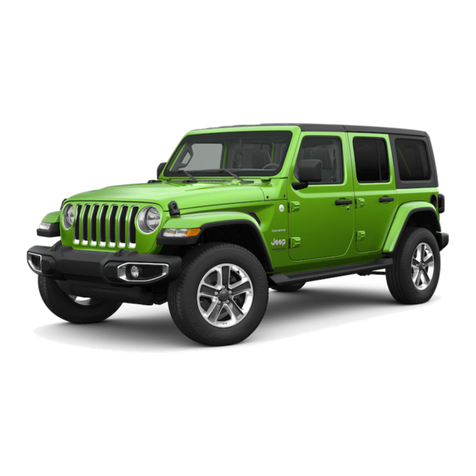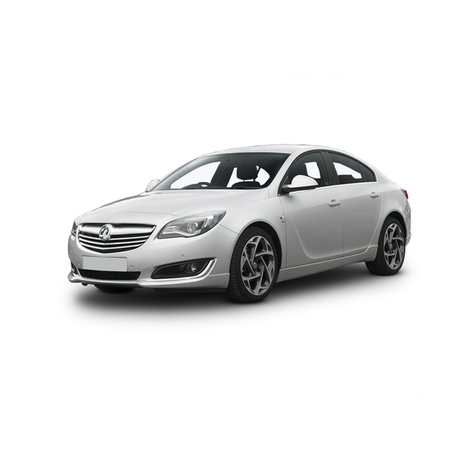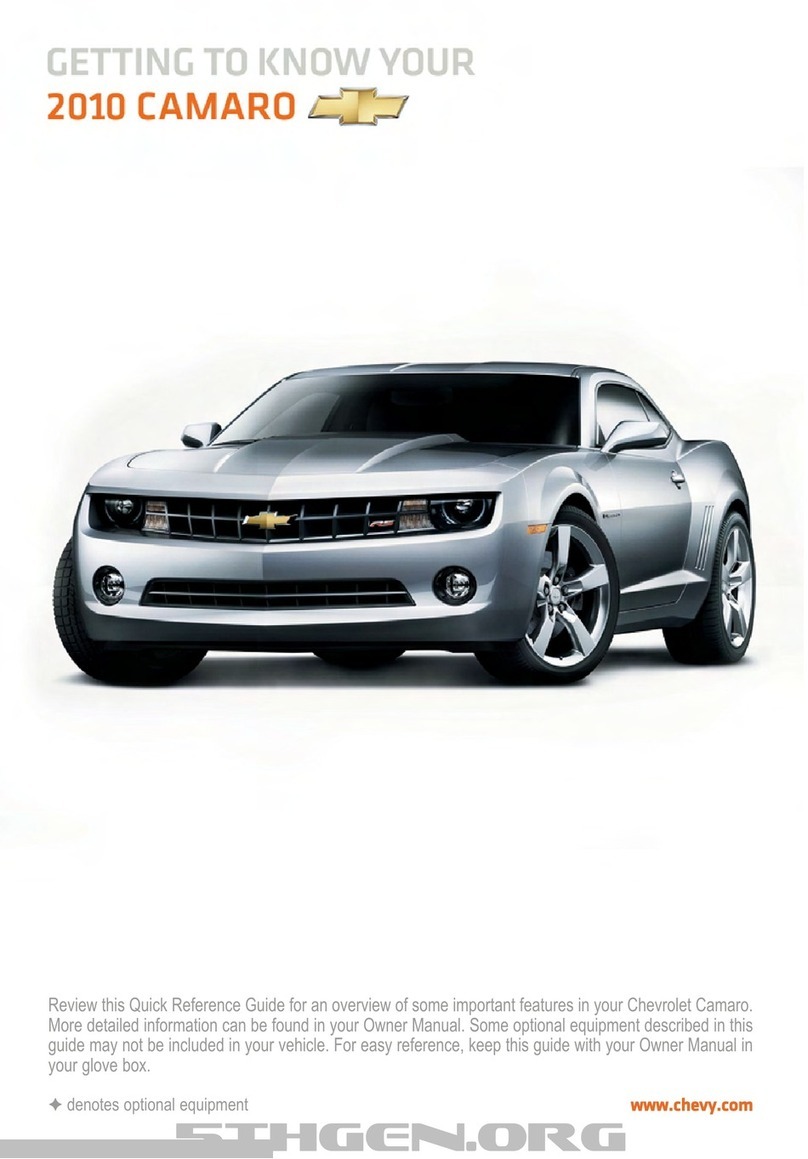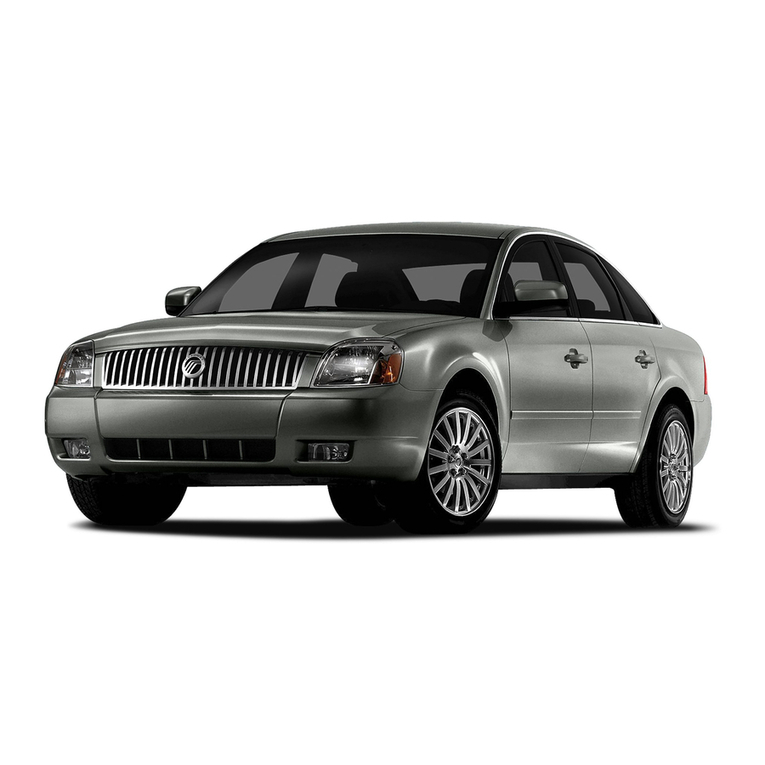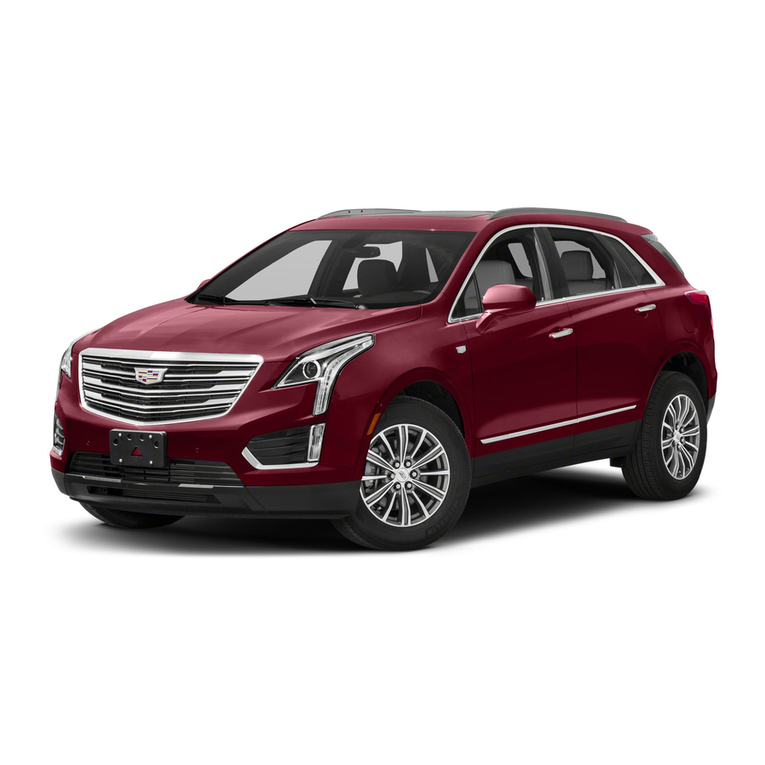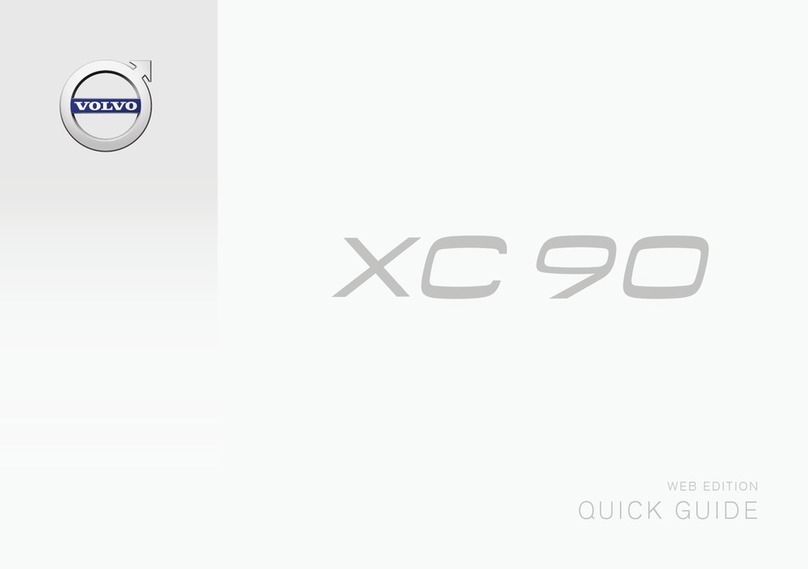Daewoo Espero User manual


his manual has been prepared to acquaint you with the operation and maintenance of
your new DAEWOO ESPERO and to provide important safety information. We urge you
to read
t
carefully and follow the recommendations to help assure the most enjoyable,
safe and trouble-free operation of your vehicle.
When
t
comes to service, remember that your local DAEWOO Outlet knows your vehicle
best and is interested in your complete satisfaction.
We would like to take this opportunity to thank you for choosing a DAEWOO product
and assure you of our continuing interest in your motoring pleasure and satisfaction.
his manual should be considered as a permanent part of your vehicle, and must re-
main with the vehicle at the time of resale.
_ DAEWOO MOTOR CO., LTD.
SEOUL, KOREA

MPORTANT NOT CE
Please read this manual and follow its
instructions carefully.
To emphasise special information, the
words W RNING, C UTION, and NOTE
have special meanings.
Information following these signal words
should be carefully reviewed.
hese instructions must be observed in
order to reduce the risk of personal in-
jury. Please read these warnings; if you
do not, then you or others could be hurt.
CAUT ON
hese instructions point out special ser-
vice procedures or precautions that
must be followed to avoid damaging the
vehicle.
Your Oaewoo car or other property can
be damaged if you do not follow these
instructions.
NOTE
Notes provide special information
which makes maintenance easier or
important instructions clearer.
ll information, illustrations and specifica-
tion in this manual are based on the latest
product information available at the time of
publication.
Daewoo reserves the right to change
specifications or design at any time with-
out notice and without incurring any obli-
gation whatsoever.
This vehicle may not comply with the
standards or regulations of other coun-
tries. Before attempting to register this
vehicle in any other country, check all
applicable regulations and make any
necessary modifications.
This manual describes the options and
trim levels available at the time of printing,
and therefore, some of the items covered
may not apply to your vehicle. If any doubt
exists about any of the options or trim
levels, please do not hesitate to contact
your Daewoo Outlet for information on the
latest specifications.
*This asterisk in this manual signifies
that an item of equipment is not in-
cluded in all vehicles (model variants,
engine options, models specific to one
country, optional equipment, etc.).
We would like to point out that non-Daewoo
genuine parts and accessories have not
been examined and approved by Daewoo,
and in spite of continuous market product
monitoring, we cannot certify the suitabil-
ity nor the safety of such products whether
they are installed or intended for fitment in
our vehicles. Daewoo is not liable for any
damage caused by the use of non-Daewoo
genuine parts and accessories.

.
BE FOR E DR IVING YOU RCA R
~
.
START ING AND 0 PER AT ING
-1
3. INSTRUM ENTSAN D CON TR0 LS................................................................................................................. 3~
4.
OTHER CONTROLS AND FEATURES
4-1
5.
VENTILATION, HEATING AND AIR-CONDITIONING*
5-1
6. AU DlOS YSTEM. ....................................................................................................................................... 6~
7.
IN CASE OF EMERGENCY..
7-1
8.
SERVICE AND MAINTENANCE
8-1
9.
VEHICLE CARE
9-1
o.
SPECIFICAT ION AND SERV ICE DATA
0-
.
INDEX -

::
C
U
::
::::)
o
>
"
z
>
::
c
w
::
o
u.
w
r:c

UNNING-IN PE IOD BEFO E D IVING OFF
ollowing a few simple precautions for the
first few hundred miles can add to the fu-
ture performance, economy and long life of
your car.
• Adjust your seating position.
• Adjust the interior and exterior mirrors
• Ensure that all occupants of the cal
have fastened their seat-belts.
• Check the operation of the warnin(;
lights when the key is turned to the
"II'
position.
• Check all the gauges.
• Release the hand brake and ensure
that the brake warning light turns off.
• Be sure you understand your car and
its equipment and how to operate it
safely.
• Ensure that the windows, exterior rear-
view mirrors and lights are clean, un-
damaged and unobstructed.
• Visually note the inflation condition
of the tyres.
• Check that all lights are working.
• Check that the area is clear if you are
about to reverse.
• Check under the vehicle for leaks.
J
I •
,
~
~ Cc--~~i[-
g)n
• Do not race the engine.
• Drive at varying speeds, trying not to
"strain" the engine.
• Avoid hard stops, except
In
emergen-
cies.
This will allow the brakes to bed In
properly.
J}
'.
>
•
t is the owner's responsibility to fre-
quently check a /lights, signaling sys-
tems and warning indicator lights. t is
important that any malfunction is cor-
rected promptly to ensure the safety of
you, your passengers and other
drivers.
• Avoid full-throttle starts.
1~2

EY WITH INTEGRATED
TRANSPONDER
n vehicles equipped with a Daewoo
Immobiliser System, two keys with an
integrated transponder are provided,
which operate all the locks on the vehicle.
Keep one of the two keys as a spare.
The key number is on the key number
plate. For vehicle security, keep the key
number plate
in
a safe place, not
in
the
vehicle. You should also record the key
number
in
a safe place, not in the vehicle.
If you need additional keys, duplicates can
be obtained from your Daewoo utlet up
to a maximum of 3.
See page 2-5 under Immobiliser System
for further details.
n case of loss, replacement keys are
available from Oaewoo Outlets by
quoting the key number.
Toprotect your car from theft, an elec-
tronic immobilisation system has been
installed in your Oaewoo.
Only keys with the correct electronic
code can be used to start the car. Even
if a key has the same profile it will not
start the engine if the electronic code
is incorrect. Always obtain replacement
or additional keys from your Oaewoo
Outlet.
-3

_
JA
D~OCk
OOR LOCKS
he front doors can be locked or unlocked
from outside by using the key.
~~
lock unlock
All doors can be locked or unlocked from
the inside by pushing down or pulling up
the door lock button located on the window
sill on each door.
unlock
)
~ OIOCk
All doors, except the driver's, can be
locked from the outside by pushing down
the door lock button then closing the door.
he lock button on the driver's door can-
not be pushed down when the door is open,
thus preventing the driver from being in-
advertently locked out.
However, if the door handle is raised, the
lock button on the driver's door can be
pushed down when the door is open.
If
you wish to lock the driver's door without
using the key, set the button in the lock
position before closing the door.
he outside door handle must be held up
while the driver's door is being closed.
Be careful not to lock your keys in the
vehicle.
• o open the door from the inside,
1. Pull the door lock button up.
U
pull
(Ifsp
2. Pull the door catch.
-4
CENTRAL OOR LOCKING
SYSTEM
By pressing down or pulling up the inte-
rior lock button on the driver's door or by
turning the key as far as it will go, all
doors are locked or unlocked.
NOTE
lways remove the ignition key and
lock all doors when leaving your
vehicle unattended.

HILD SAFETY DOOR LO KS
hen the metal latch beneath the lock on
either of the rear doors is pushed
upwards, the door cannot be opened from
the inside.
Rear doors locked with the child safety
mechanism can still be opened from the
outside provided that the door lock button
is not pushed down.
FUEL TANK FILLER AP
1. Pull the door lock button of the driver's
door upwards.
pull
(~
2. Stop the engine. Push the cover of
the fuel tank filler cap to open.
push
3. Turn the fuel filler cap anticlockwise to
open.
BOOT LID
1. Press the boot lid release button in the
driver's side door panel.
~~
r~~
\ \ \ press
2. Or using the key,
rotate the lock cover to open and in-
sert the key into the key slot turning it
clockwise.
To close, push the lid down. After clos-
ing, make sure that it is secure.
l
/
~
-
~\
cap
-5
oavoid drawing dangerous exhaust
gases into the vehicle, do not drive
with the boot lid open.

L CTRIC WINDOW SWITCH S
he windows can be operated by
switches located in the driver's door arm-
rest when the ignition switch is in the "on"
position.
When the safety lock switch is depressed
power is cut to the individual door window
switches. However, the driver can still op-
erate all the windows using the switches
in the driver's door armrest.
When the left-hand part of the door lock
switch is pressed, all the doors are locked.
When the right-hand part of the door lock
switch is depressed, all the doors are
unlocked.
Care must be taken when operating
the electric windows. There s a risk of
injury, particularly for children, and a
danger that articles could become
trapped.
Make sure that all vehicle occupants
know how to operate the windows cor-
rectly.
f there are children on the rear seat,
press the safety lock button to isolate
the individual window switches.
Keep
a
close watch on the windows
when closing them. Ensure that no-
thing becomes trapped in them.
Upon leaving the vehicle the driver must
remove the ignition key in order to pre-
vent other vehicle occupants from op-
erating the. windows (with apotential
risk of injury).
NOT
f the system
s
overloaded, the power
supply s automatically cut off for a
short time.
Passengers' door window switches are lo-
cated inthe armrest of each door. Press the
lower part of the switch to lower the
window and the upper part of the switch
to raise the window. Release the switch
when the window reaches the desired
position.
When the safety lock switch is pressed,
the passengers' windows cannot be
operated, except by the driver.
Driver's
side switch
Rear right
side switch
Door lock switch
Safety lock switch
Rear left
side switch
Passenger's
side switch
-6

.
...
..
FOldingthe exterior rear-view mirror*
Push the exterior rear-view mirror to fold
it.
he exterior mirrors will be released from
their supports under heavy impact for the
safety of passengers and pedestrians.
he mirrors can be locked back into
position with a light blow of the hand at
right angles to the vehicle.
AUTION
t-I ----------,
Takecare whenjudging the size or dis-
tance of vehicle or other object seen
in the side convex mirror. Be aware that
objects will look smaller and appear
farther away than when viewed in flat
mirror.
Use your interior rear-view mirror to de-
termine the size and distance of ob-
jects seen in the side convex mirror.
Convex rear-view mirror*
he exterior mirror on the passenger's
side is convex if it says "OBJEC S
IN
MIRROR ARE CLOSER HAN HEY
APPEAR".
Use this mirror to get a wider view of the
road behind.
il~~
adjusting
lever
Adjust the exterior rear-view mirrors with
the adjusting lever so that you can see
not only each side of the road behind you
but also each side of your vehicle. his
helps you determine the location of
objects seen in the mirror.
Simply move the adjusting lever in the
desired direction to adjust the position of
the mirror.
night
AUTION
lways adjust the mirror with the selec-
tor set to the day position.
Only use the night position if it is
necessary to reduce glare from the
headlights of vehicles behind you.
Be aware that in this position you may
not be able to see some objects that
could be seen in the day position.
he interior mirror can be adjusted up,
down or sideways to obtain the best view.
he interior mirror has day and night
positions.
Move the knob to the night position to re-
duce glare from the headlights of vehicles
behind you.
-7

IL ABLE S EERING WHEEL
he steering wheel can be adjusted to
different positions.
l
he steering wheel can be adjusted by
pulling left-hand the control lever on the
side of the steering column, moving the
wheel to the desired position and then
releasing the lever. In order to provide
easy access to the vehicle, the wheel can
be moved to its uppermost position when
leaving the car.
WARNING
I
I
o not adjust the tiftable steering
wheel while the vehicle is moving to
avoid losing control of the vehicle.
FRON SEA SLIDE ADJUS MEN
o move the seat forwards or backwards,
pull up the control lever located under the
front of the seat, and hold it.
hen slide the seat to the desired posi-
tion and release the lever.
WARNING
o not adjust the driver's seat whilst
the vehicle is moving to avoid losing
control of the vehicle.
Make sure that the driver's seat is
properly adjusted before you start
driving.
WARNING
To avoid excessive seat-belt slack,
which reduces the effectiveness of
the seat-belts, make sure that the
seats are adjusted before the seat-
belts are fastened.
-8
FRON SEA RECLINING
ADJUS MEN
o adjust the seat back, rotate the knob
at the side of the seat until the desired
angle is achieved.
The seat backs should always be in
fairly upright position when driving,
or the effectiveness of the seat-belts
may be reduced.
The seat-belts are designed to offer
maximum protection when the seat
backs are in the fully upright position.
Make sure that the reclining seat
backs are properly adjusted before
you start driving.

RIVER'S SEAT HEIGHT HEA RESTRAINTS REAR SEAT ARMREST
he head restraints are designed to help
reduce the risk of neck injuries. he pull-down rear seat armrest is located
in the centre of the rear seat.
a
~I
}&~Iftr:l~
il
~=-;--PUII; -~-:
I ~ I
Push ~ _
. - I
::J
"--
o adjust the head restraint, unlock the re-
lease spring on the left-hand side of the
head restraint by pushing the lock release
button, sliding the restraint up or down,
and releasing the button to lock it into
position.
o remove the head restraint pull it up as
far as it will go while pushing the lock re-
lease button.
CAUTION
djust the top of the head restraint
so that
t
is closest to the top of your
ears.
fter adjusting the head restraint,
ensure that it is locked in position.
00
not drive with the head restraint
removed.
A JUSTMENT
turn
he desired seat height can be achieved
by turning the crank handle located below
the driver's seat.
-9

EAT-BELT PRECAUTION
o protect you and your passengers in the
event of an accident, it is recommended
that the seat-belts be worn by all occu-
pants whilst the vehicle is in use. Seat-
belts should be worn correctly.
Rear passengers not wearing seat-belts
are a danger to the driver and front pas-
senger in the event of an accident.
he seat-belts are designed to be used
by only one person at a time : they are
not suitable for use by children below 6
years of age. Suitable child seats, booster
cushions should be fitted.
WARNING
-1 -----~
o reduce the likelihood of injury to
both the pregnant woman and the un-
born child, the lap belts should be
worn
as
low
as
possible when
pregnant.
j
CAUTION
I
I
he seat-belt will provide maximum
protection for its wearer if the seat
back is adjusted to afully upright
position. When the seat back is re-
clined, there is agreater risk that the
passenger will slide under the belt,
especially in aforward impact, and
may be injured by the belt or by
striking the instrument panel.
CAUTION
NEVER
Wear the shoulder belt under the
arm nearest the door.
Use a belt for more than one per-
son at a time.
Wear the belts twisted or with the
buckle release button facing down-
ward or inward.
Let the belt system become dam-
aged by a door or seat.
Put anything into the opening where
the safety belt passes through the
trim panel. his may jam the retrac-
tor or damage the belt.
1-1
THREE-POINT EAT-BELT
Each Daewoo vehicle is equipped with
three-point seat-belts with automatic
retractors, allowing freedom of body
movement when driving at even, constant
speeds, although the spring-tensioned
belts are always a snug fit.
his type of belt requires no length adjust-
ment. Once worn, the belt adjusts itself to
the movement of the wearer, but in the
event of a sudden or strong shock, the belt
automatically locks to restrain the wearer's
body.

EAT-BELT HEIGHT ADJU TER*
U ING THE BELT LAP BELT
To remove the belt, depress the red push-
button on the buckle. The belt will retract
automatically.
PULL to
lengthen
@PU~u
9
Position the lap belt Iowan the hips.
To remove the belt, depress the red but-
ton on the buckle.
CAUTION
I
I
Never wear the lap belt across your
abdomen. During accidents it can
press sharply against the abdomen
and increase the risk of injury.
INSERT to fasten
To lengthen, hold the plate at right angles
to the belt and pull on the belt. To shorten,
pull the free end of the belt away from
the tongue, then pull the belt clip to take
up the slack.
A lap belt is installed in the centre of the
rear seat.
Insert the metal latch plate into the buckle
until it locks.
({\;''\
J
~
IW
~
~
' f
@ /
I
~f(j
~~ !
.~//
-"':::.,
.~
,
Pull the belt evenly out of the retractor
and guide it across the body, making cer-
tain that it is not twisted.
Insert the metal latch plate
CD
into the
buckle(g) .
/~ll
CAUTION
lways be sure that the belt is posi-
tioned across the shoulder
as
close to
your neck
as
possible and not on your
upper arm or neck. Failure to do
so
could reduce the amount ofprotection
in an accident and increase the
chance of injury.
I.
n seat-belts with a height-adjustable up-
per anchorage point, pull the belt out,
depress "A" and adjust the height.
This is particularly important if a smaller
person has previously selected a lower
position.
Too high a position can impair comfort.
1-11

EAT-BELT WARNING CHIME
he seat-belt warning chime will sound for
about 4 to 8 seconds when the ignition
switch is in the "II" position unless the
driver's seat-belt is securely fastened.
CARE OF BELT
Always keep the seat-belts clean and dry.
Clean only with a mild soap solution or
lukewarm water.
Do not bleach or dye belts since this may
severely weaken them. Make sure that
the belt is not damaged or trapped by
sharp edged objects.
Periodically inspect all parts of the belts
and have damaged parts replaced. A belt
which has been overstretched in an acci-
dent must be replaced by a new one.
Do not perform any alterations to your
vehicle's seat-belt system.
CAUTION
o help reduce the risk of personal
injury in collisions or sudden manoeu-
vres, use the safety belts in accordance
with these instructions on their proper
use and maintenance.
Children small enough for child re-
straints (as indicated on the label of
such restraints) should always travel in
one. Accident statistics indicate children
are safer when properly restrained in
the rear seat rather than in the front
seat. Accordingly, we recommend chil-
dren be restrained in the rear seat.
- 2
DRIVER' AIR BAG
he air bag is stored in the centre pad of
the steering wheel.
he air bag Supplementary Restraint
System (SRS) helps protect the driver's
head and chest against injuries in the
event of a collision.
C[JJ
he air bag system activates during severe
collisions which are either frontal or when
the impact angle is up to 30° from straight
ahead.

he air bag inflates within milliseconds dur-
ing a crash and forms a safety cushion for
the driver.
After the air bag completely inflates,
t
immediately deflates so that
t
does not
interfere with the driver's visibility or ability
to steer and operate other controls.
he air bag inflates with considerable force
and speed. It is therefore important that the
driver's seat and seat back should be cor-
rectly adjusted, for the air bag to be fully
effective. he driver's seat should be ad-
justed so that the steering wheel can be
reached with the arms slightly angled.
When the air bag inflates,an operating noise
may be heard and a small amount of
smoke-like gas will be released. he gas is
harmless and does not indicate that there
is a fire.
WARNING
he air bag system will not be trig-
gered in the event of rear impact,
side impact, rollover or minor fron-
tal collision. he seat-belts must
therefore always be worn. he air
bag system serves to supplement
the seat-belt.
Never affix anything to or over the
centre of the steering wheel, as it
could cause injury when the air bag
is
triggered.
Do not perform any alterations to
the components of the air bag sys-
tem. he system can be triggered
abruptly if it
is
treated improperly.
he steering wheel and instrument
panel must only be removed by
Daewoo Outlet or Daewoo Autho-
rised Service Operation.
he air bag can be triggered only
once. It must then be replaced only
by Daewoo Outlet or Daewoo
Authorised Service Operation.
1-13
Repairs to the steering wheel,
steering column and air bag system
must be carried out only by
Daewoo Outlet or Daewoo Autho-
rised Service Operation. Injuries
may result if the air bag
is
triggered
inadvertently.
Do not stick anything on the steer-
ing wheel and instrument panel or
cover them with other materials.
Clean them only with
dry or
damp cloth. Do not use any aggres-
sive cleaning agents.
he air bag system must only be
disposed of by Daewoo Outlet
or Daewoo Authorised Service
Operation.
Seat-belts must always be worn
and
sufficient distance kept
between the driver and the wheel.

z
-
!ci:
a:
w
-
o
c
z
e:c
z
-
~
a:
i:!:
n
'I
C\J

UEL RECOMMENDATIONS
Use Unleaded uel Only.
Unleaded fuel with a Research Octane
Number 95 must be used in your
Daewoo vehicle.
uel quality has a decisive influence on
the power output, driveability and life of
the engine. The additives contained in the
fuel play an important role in this respect.
You should therefore use only high-quality
fuels containing additives.
uels with too Iowan octane number can
cause pre-ignition or detonation. Daewoo
cannot be held liable for the resultant
damage.
Leaded fuel must never be used. It will
cause the catalytic converter to become in-
effective and the emission control system
to malfunction.
This can also result in increased mainte-
nance expense.
To avoid the accidental use of leaded fuel,
the larger nozzle used with leaded fuel at
service stations cannot be inserted into
the fuel tank opening of your Daewoo
vehicle.
Do not Use Methanol
uels containing methanol (wood alcohol)
should not be used in your Daewoo. This
type of fuel can reduce vehicle performance
and damage components of the fuel sys-
tem.
1
CAUTION
I
I
arranty Policy will not cover damage
to the fuel system and any perform-
ance problems that are caused by the
use of methanol or fuel containing
methanol.
-
Operation in oreign Countries
If you are going to drive your Daewoo in
another country, be sure to :
Observe all regulations regarding reg-
istration and insurance.
Check that suitable fuel is available.

GN T ON SW TCH
OFF
he engine can be turned off without
locking the steering wheel.
LOCK
he steering is locked by removing
the key. Rotate the steering wheel
until the lock is engaged.
For easier key operation when unlock-
ing, move the steering gently from
right to left and turn the key to the "I"
position.
ON
his position turns on the ignition sys-
tem and the electrical accessories.
START
his position activates the starter mo-
tor, starting the engine.
Release the keywhen the engine starts,
and it will be returned to the "II" posi-
tion automatically.
-3
WARN NG
. Never remove the key while driv-
ing. If the key is removed, the
steering wheel will lock. This may
cause the driver to lose control of
the vehicle and could result in seri-
ous vehicle damage or personal
injury.
2. Never turn the key to the "B" or "/"
position when the car is still
moving.
Table of contents
Other Daewoo Automobile manuals

Daewoo
Daewoo Leganza User manual

Daewoo
Daewoo KORANDO User manual

Daewoo
Daewoo MUSSO User manual

Daewoo
Daewoo MUSSO User manual

Daewoo
Daewoo RACER 1998 Quick start guide
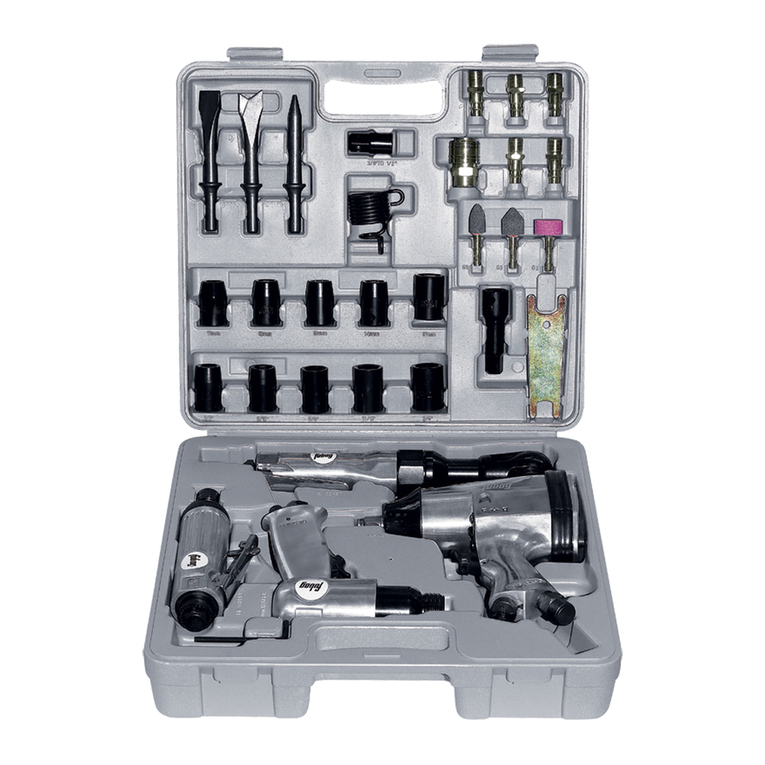
Daewoo
Daewoo MATIZ User manual
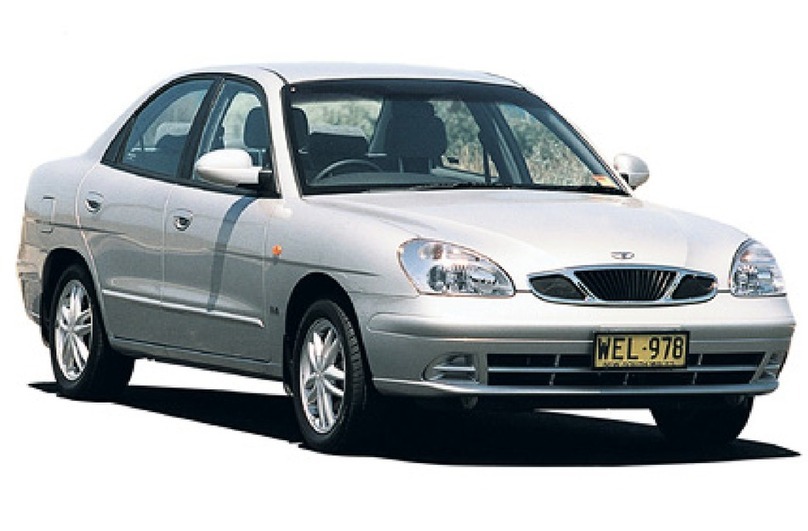
Daewoo
Daewoo NUBIRA User manual
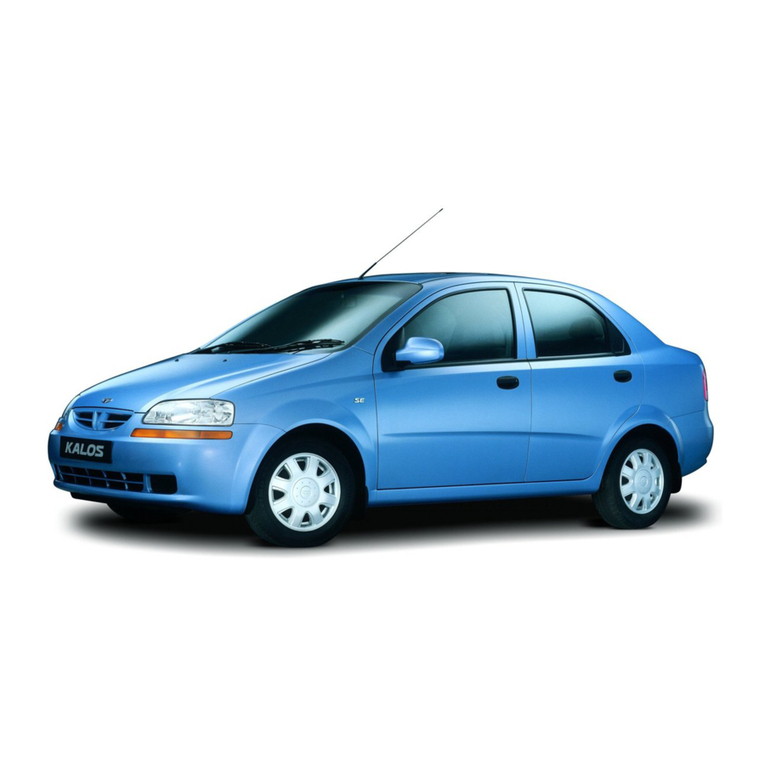
Daewoo
Daewoo Kalos User manual
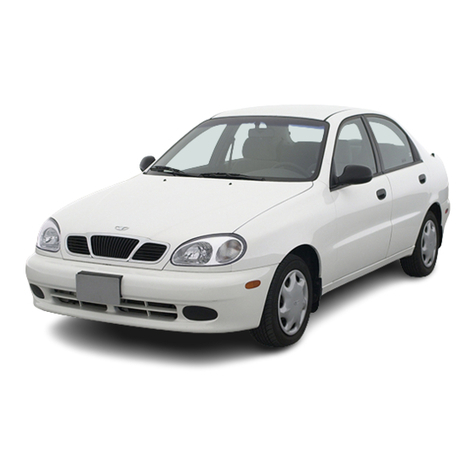
Daewoo
Daewoo Lanos 2002 User manual
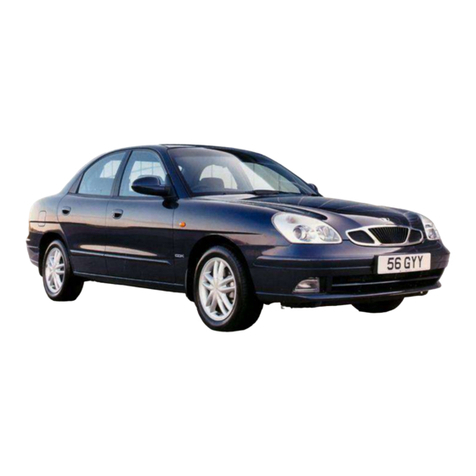
Daewoo
Daewoo NUBIRA User manual

